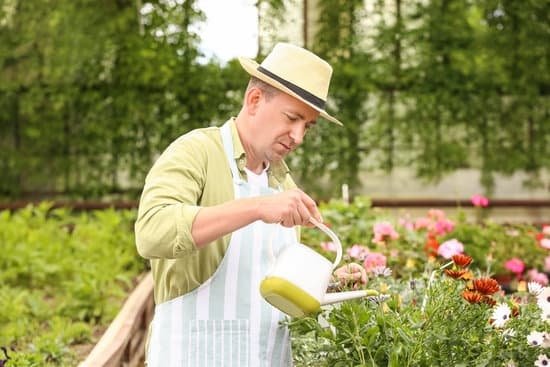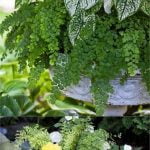Are you considering starting your own backyard vegetable garden? In this article, we will explore some backyard vegetable garden ideas to help you get started. From planning your space to harvesting and enjoying the fruits of your labor, we’ll cover everything you need to know to start and maintain a thriving garden right in your backyard.
Backyard vegetable gardens are a great way to ensure a fresh and healthy supply of produce right at your fingertips. Whether you have a large yard or just a small patch of land, growing your own vegetables can be a rewarding and cost-effective endeavor. Not only does it provide access to fresh, organic produce, but it also promotes sustainability and self-sufficiency.
One of the many benefits of growing your own vegetables in your backyard is the control over what goes into the soil. By avoiding harmful pesticides and chemicals, you can ensure that your produce is free from harmful substances.
Additionally, gardening has been shown to have mental health benefits, providing stress relief and a sense of accomplishment as you watch your garden grow. So let’s dive into some ideas for how you can make the most out of your backyard vegetable garden.
Planning Your Space
When planning your backyard vegetable garden, it is essential to consider the available space and sunlight in order to ensure a successful harvest. Whether you have a small yard or a spacious backyard, there are several ways to make the most of your gardening space. Here are some key steps to consider when planning the layout of your garden:
- Assessing the available space: Take a careful look at the area where you want to start your vegetable garden. Consider factors such as nearby trees or structures that may cast shade, as well as any obstacles that could affect the layout.
- Choosing the right location: Select a spot that receives ample sunlight, ideally at least six hours of direct sunlight per day. Additionally, consider factors such as water accessibility and proximity to your home for convenience.
Careful planning and consideration of these factors will help set the stage for a thriving backyard vegetable garden.
In addition to assessing space and sunlight, it’s important to determine the layout of your garden beds and pathways. Raised beds are an excellent option for maximizing space and providing better drainage for your plants. Container gardening is also an ideal choice for those with limited outdoor space, as it allows for flexibility in arranging and moving plants as needed.
Having a well-planned space will not only facilitate easier maintenance and harvesting but will also contribute to the overall aesthetic appeal of your backyard vegetable garden. With these considerations in mind, you can create an efficient and attractive gardening space that suits your needs and encourages healthy plant growth.
Vegetable Selection
When it comes to creating a successful backyard vegetable garden, selecting the right vegetables to grow is crucial. Not all vegetables thrive in every climate or soil type, so it’s important to choose wisely based on your specific conditions. Here are some tips and ideas for selecting the best vegetables for your backyard garden.
Best Vegetables to Grow
Some of the best vegetables to consider for your backyard garden include tomatoes, peppers, lettuce, carrots, cucumbers, zucchini, and green beans. These are all relatively easy to grow and can produce a bountiful harvest with proper care. Additionally, herbs like basil, oregano, and parsley are great additions to any vegetable garden and can be used to enhance the flavor of your home-cooked meals.
Tips for Choosing the Right Vegetables
When choosing which vegetables to grow in your backyard garden, consider your climate and the amount of sunlight your garden receives. Some vegetables, such as tomatoes and peppers, require full sun for optimal growth and fruit production. Others, like lettuce and spinach, prefer cooler temperatures and some shade. It’s also important to consider the space you have available – some vegetables like squash and melons require ample room to spread out while others can be grown in smaller spaces.
Additional Considerations
In addition to climate and space considerations, think about what types of vegetables you actually enjoy eating. There’s no point in growing a vegetable that you or your family won’t eat. When planning your backyard vegetable garden, make sure to include a mix of vegetables that you love and that will thrive in your specific growing conditions.
With careful consideration and planning, you can create a flourishing garden filled with delicious homegrown produce that will provide endless enjoyment throughout the growing season.
Soil Preparation
Preparing the Soil for Planting
Before starting your backyard vegetable garden, it’s essential to properly prepare the soil. Begin by removing any debris or weeds from the area where you plan to plant. Next, loosen the soil to a depth of at least 12 inches using a garden fork or tiller.
This will ensure that the roots of your vegetables have room to grow and access to nutrients. Additionally, consider adding organic matter such as compost or manure to improve the soil structure and fertility.
Choosing the Right Soil Amendments
Depending on your location and the current condition of your soil, you may need to add specific amendments before planting your vegetables. Conduct a soil test to determine the pH level and nutrient content of your soil.
Based on the results, you can then adjust the pH with lime or sulfur and add additional nutrients like nitrogen, phosphorus, and potassium as needed. Alternatively, consider using organic fertilizers or natural amendments such as bone meal, fish emulsion, or seaweed extract for a more environmentally friendly approach.
Importance of Soil Preparation
Properly preparing your soil is crucial for the success of your backyard vegetable garden. By taking the time to assess and amend your soil before planting, you are setting up your plants for optimal growth and yield. The health of your vegetables is directly linked to the health of your soil, so investing in this step will pay off in a bountiful harvest later on.
Keep in mind that healthy soil leads to healthy plants which can be more resistant to pests and diseases. Therefore, paying attention to soil preparation is key for a thriving home garden.
By taking these steps in preparing your garden space before planting, you’re setting yourself up for success in growing delicious and nutritious vegetables right in your own backyard.
Planting and Maintenance
When it comes to starting your own backyard vegetable garden, the first step is deciding whether to plant seeds or seedlings. Planting seeds allows for a wider variety of vegetables, but may require more time and attention. On the other hand, using seedlings can provide a head start and more predictability in terms of growth. Consider your time, resources, and level of experience when deciding which option is best for you.
Once your seeds or seedlings are in the ground, proper watering, feeding, and weeding are essential for a thriving garden. Different vegetables have different water needs, so it’s important to research the specific requirements for each type of plant in your garden. Regular feeding with a balanced fertilizer can help ensure healthy growth and a bountiful harvest. Weeding is also crucial to prevent competition for nutrients and space.
In addition to regular maintenance tasks, it’s important to keep an eye on pests and diseases that can threaten your vegetable garden. There are many natural pest control methods that can be effective without harming the environment or beneficial insects.
Additionally, preventing common garden diseases through proper spacing, good air circulation, and careful sanitation practices can go a long way in keeping your plants healthy. By staying on top of planting and maintenance tasks, you can set yourself up for success in enjoying a fruitful harvest from your backyard vegetable garden.
Companion Planting
To get started with companion planting in your backyard vegetable garden, here are some popular combinations of vegetables that work well together:
- Tomatoes, basil, and onions: Planting basil and onions near tomato plants can help repel pests like aphids and hornworms while enhancing the flavor of the tomatoes.
- Carrots, radishes, and lettuce: The quick-growing radishes can act as a natural pest repellent for carrots while the lettuce provides shade for the shallow-rooted carrots.
- Cucumbers, corn, and beans: The tall corn stalks provide support for climbing cucumbers while beans fix nitrogen in the soil, benefiting all three crops.
In addition to these combinations, consider integrating flowers such as marigolds or nasturtiums into your vegetable garden. These flowers not only add beauty to your garden but also act as natural pest deterrents and attract beneficial insects. With careful planning and research, you can create a thriving backyard vegetable garden using companion planting techniques.
By incorporating companion planting into your backyard vegetable garden ideas, you can achieve a more bountiful harvest while reducing the need for chemical pesticides and fertilizers. This sustainable gardening method not only benefits your plants but also promotes a healthier environment for all living organisms in your backyard ecosystem. Happy gardening.
Pest and Disease Control
In order to maintain a thriving backyard vegetable garden, it is essential to implement effective pest and disease control measures. One of the best natural pest control methods is to encourage beneficial insects such as ladybugs, lacewings, and praying mantises to inhabit your garden. These insects prey on common garden pests like aphids, caterpillars, and mites, helping to keep their populations in check without the need for chemical pesticides.
Additionally, practicing good gardening hygiene can help prevent common diseases that may affect your vegetable plants. This includes regularly removing dead or diseased plant material, as well as properly disposing of any affected crops. It is also important to rotate your crops each season to minimize the risk of diseases building up in the soil over time.
Finally, if you do encounter a pest infestation or a disease outbreak in your backyard vegetable garden, it is crucial to act quickly and treat the issue before it spreads. There are many organic and natural remedies available for controlling pests and diseases, such as neem oil for controlling aphids and powdery mildew, or diatomaceous earth for managing slugs and snails.
By implementing these pest and disease control strategies, you can help ensure the long-term health and productivity of your backyard vegetable garden.
| Pest/Disease Control Method | Benefit |
|---|---|
| Encouraging beneficial insects | Natural pest control without chemicals |
| Good gardening hygiene | Prevents common diseases from affecting plants |
| Organic/natural remedies | Treats infestations without harmful chemicals. |
Harvesting and Enjoying
After all the hard work and effort put into planning, planting, and maintaining a backyard vegetable garden, the most rewarding part is harvesting the fresh produce. Whether it’s a handful of cherry tomatoes or a basket full of zucchinis, there’s nothing quite like enjoying the fruits of your labor.
When it comes to harvesting vegetables from your garden, timing is key. It’s important to pick vegetables at the peak of freshness for the best flavor and nutritional value. For many vegetables, such as tomatoes and peppers, this means waiting until they are fully ripe before harvesting. On the other hand, leafy greens like lettuce and spinach should be harvested when they are young and tender.
Once you’ve harvested your vegetables, it’s time to enjoy them in delicious meals. From simple salads to hearty soups and stir-fries, there are endless ways to make use of your homegrown produce. Not only will you savor the superior taste of freshly picked vegetables, but you’ll also appreciate the savings on your grocery bill.
For those with an abundant harvest, consider preserving some of your vegetables for later use. Canning, pickling, freezing, or drying are great options for extending the enjoyment of your homegrown vegetables throughout the year. With a bit of creativity in the kitchen, you can continue to appreciate your backyard harvest long after the growing season has ended.
Overall, when it comes to harvesting and enjoying the bounty from your backyard vegetable garden ideas-whether it’s savoring a ripe tomato straight from the vine or preserving surplus produce for winter meals-the rewards are truly satisfying.
Conclusion
In conclusion, starting a backyard vegetable garden is not only a rewarding and fulfilling experience but also has numerous benefits for you and the environment. By growing your own vegetables, you will have access to fresh, organic produce right in your backyard, reducing the need for store-bought vegetables that may have been treated with pesticides and chemicals. This will not only benefit your health but also contribute to a more sustainable and eco-friendly lifestyle.
Moreover, by starting your own backyard vegetable garden, you can save money on grocery bills while enjoying the satisfaction of nurturing your plants from seedlings to harvest. Whether you have a small patio or a spacious lawn, there are plenty of backyard vegetable garden ideas that can help you make the most of your available space and create a thriving garden. With careful planning and maintenance, even beginners can enjoy a bountiful harvest of fresh vegetables throughout the growing season.
At the end of the day, the joy of harvesting and enjoying your homegrown vegetables is an unparalleled experience that provides not only delicious food but also a sense of accomplishment and connection to nature. So why not start today? With the right knowledge and resources at hand, anyone can create their own backyard vegetable garden and reap the numerous rewards that come with it.
Frequently Asked Questions
How Do You Layout a Backyard Vegetable Garden?
To layout a backyard vegetable garden, start by choosing a sunny spot with good soil drainage. Plan the layout by considering the space needed for each plant, ensuring easy access for watering and harvesting.
What Vegetables Can You Grow in a Backyard Garden?
In a backyard garden, you can grow a variety of vegetables including tomatoes, peppers, lettuce, carrots, radishes, zucchini, squash, cucumbers, green beans, and herbs like basil and parsley. Choose vegetables that suit your climate and soil conditions.
What Is the Best Vegetable Garden for Beginners?
The best vegetable garden for beginners includes easy-to-grow varieties such as tomatoes, lettuce, green beans, radishes, and zucchini. These plants are low-maintenance and can thrive in various growing conditions, making them perfect for those new to gardening.

Welcome to my gardening blog! I am passionate about plants and enjoy sharing my knowledge and experiences with others. In this blog, I will write about everything related to gardening, from tips on how to get started to updates on my own garden projects.





